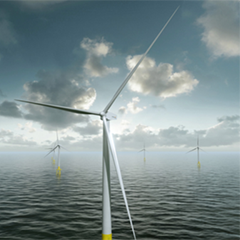Does a bottlenose dolphin change its ranging movement because of a wind turbine? Or a razorbill change its migration route? How do human beings change behaviours with an offshore wind farm nearby? PES brings you a pioneering scientific research programme from Vattenfall, which aims to answer these questions and more.
Four projects have initially been selected to receive a share of the €3mn Scientific Research and Monitoring Fund which is the brainchild of Swedish energy company Vattenfall. The projects will be based at Vattenfall’s European Offshore Wind Deployment Centre (EOWDC) in Aberdeen Bay.
Adam Ezzamel, Project Director for the EOWDC, said they felt such a programme represented an opportunity that was too good to miss. ‘These projects will be carried out in a real-time environment as part of the largest-scale offshore wind programme of its kind. Conducting this research at the EOWDC is an unmissable chance to gain hitherto unknown knowledge of the environmental effects of offshore wind developments.
‘Not only will this programme place Scotland at the forefront of research and development in the sector and reinforce its position as a renewable energy powerhouse, it will inform industry policy-making in Europe and beyond.’
The 11-turbine EOWDC is Scotland’s largest offshore wind test and demonstration facility, and construction of the cutting-edge facility began in October 2016.
The first of these projects will examine bottlenose dolphins along Scotland’s east coast. The Sea Mammal Research Unit at the University of St. Andrews has teamed up with SMRU Consulting to improve the understanding of the dolphins ranging patterns.



























